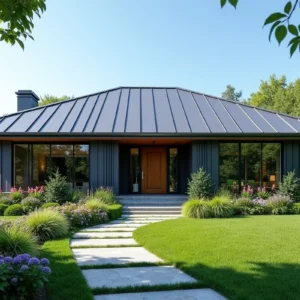The commercial real estate landscape is undergoing a significant transformation, influenced by various factors such as technology, sustainability, and urbanization. Staying ahead of these trends is crucial for stakeholders looking to make informed decisions and capitalize on future opportunities.
As commercial real estate evolves, understanding real estate accounting becomes increasingly essential, helping stakeholders manage their financials better and maximize returns.
This article will delve into the key trends and predictions shaping the future of commercial real estate, providing insights to help investors, developers, and other stakeholders navigate this dynamic market. You can better prepare for the industry’s evolving demands by keeping an eye on these trends.
Whether integrating cutting-edge technologies or adopting new investment strategies, staying informed about these changes can offer a competitive advantage.
Contents
Technology Shaping the Industry
Technology significantly shapes commercial real estate, from intelligent building systems to virtual tours. Recent advancements allow for better building management and enhanced tenant experiences. Intelligent building technologies make properties more efficient, reduce operating costs, and improve tenant satisfaction.
For example, IBM discusses how AI and IoT are creating more innovative buildings that are more efficient, comfortable, and user-friendly. These technologies enable property managers to monitor systems in real time, anticipate maintenance needs, and enhance security protocols.
Moreover, virtual reality (VR) and augmented reality (AR) are revolutionizing how properties are marketed and leased. Potential tenants can now take immersive virtual tours of properties without stepping foot on-site, saving time and resources for both parties. This technological shift appeals to tech-savvy tenants and opens new possibilities for remote and international investments.
Sustainability and Green Buildings
Sustainability is now an essential element of commercial real estate, not just a trendy term. Green buildings offer both environmental benefits and financial advantages over the long term. Buildings prioritizing sustainability often have lower costs because of energy-efficient technology and less waste.
LEED-certified buildings help conserve funds and resources, benefiting the well-being of people inside. These structures are created to enhance indoor air quality, optimize water usage, and lessen environmental footprint.
Moreover, renters place more importance on sustainability when choosing where to rent. Corporations seek office spaces aligning with their corporate social responsibility objectives. Implementing sustainable building practices attracts top-tier tenants, boosts property values, and improves market appeal.
Consequently, developers and property managers are increasing their investments in green certifications and sustainable design to fulfill market demand and regulatory mandates.
Flexible Workspaces and Their Rise
The demand for flexible workspaces is rising, driven by the need for adaptable and scalable office solutions. Co-working spaces are becoming more popular among startups and even large enterprises looking for temporary office space.
These workspaces offer a range of benefits, including flexibility in lease terms, access to shared amenities, and opportunities for networking and collaboration. This trend is reshaping how commercial spaces are designed and utilized, offering more options for businesses of all sizes.
Businesses must reevaluate their real estate requirements as remote labor becomes more common. Flexible workplaces allow companies to scale up or down swiftly in response to shifting demands. This flexibility benefits businesses that could develop quickly and suddenly need more space.
Furthermore, flexible offices are frequently found in desirable metropolitan locations, giving employees easy access to services like public transit.
Urbanization and Its Impact
Rapid urbanization is shaping the demand for commercial real estate in major cities. As more people move to urban areas, the demand for commercial spaces like offices, retail stores, and entertainment hubs is increasing.
This shift leads to the development of mixed-use properties that combine residential, commercial, and recreational spaces, creating vibrant urban centers. These mixed-use developments meet the diverse needs of urban residents and create opportunities for businesses to thrive.
Urbanization also presents challenges, such as increased competition for prime locations and the need for infrastructure improvements. Cities invest in transportation networks and public services to accommodate growing populations and support commercial activities.
Developers respond by creating innovative projects that maximize space and integrate seamlessly into the urban fabric. As a result, urbanization is driving the evolution of commercial real estate, fostering innovation, and enhancing the livability of cities.
Investment Strategies for the Future
Investors need to adapt their strategies to keep up with these emerging trends. Diversifying portfolios and focusing on sustainable and technology-driven properties can offer a competitive edge. By understanding market trends and leveraging data insights, investors can make more informed decisions and achieve better investment returns.
Properties incorporating green building practices and advanced technologies will likely attract high-quality tenants and retain their value over time.
Additionally, investors increasingly look at secondary markets and niche sectors to diversify their portfolios. These markets offer attractive opportunities for growth and higher yields compared to traditional commercial hubs.
Exploring sectors like industrial real estate, healthcare facilities, and data centers can provide a balanced mix of risk and reward. By staying abreast of industry trends and being open to new investment avenues, investors can optimize their strategies for future success.
Using Data and Insights for Better Decision-Making
Data analytics is becoming invaluable in commercial real estate, helping stakeholders make more informed decisions. Advanced data insights can predict market trends, optimize operations, and enhance tenant satisfaction.
Technology platforms that aggregate and analyze data enable real estate professionals to make data-driven decisions that improve asset performance and tenant experiences. These platforms provide real-time insights into market conditions, tenant behavior, and property performance, allowing for proactive management and strategic planning.
Moreover, data analytics can identify opportunities for cost savings and revenue generation. For example, analyzing energy consumption patterns can reveal inefficiencies that, once addressed, can significantly reduce operating costs.
Similarly, tenant feedback collected through digital platforms can inform improvements in building services and amenities, leading to higher tenant retention and satisfaction. By harnessing the power of data, commercial real estate professionals can enhance the value of their properties and better meet the needs of their tenants.
Final Thoughts
The commercial real estate industry is constantly changing and progressing. By remaining well-informed and flexible, stakeholders can successfully navigate obstacles and take advantage of opportunities.
Being proactive and forward-thinking is essential for success in the constantly evolving industry, whether through adopting new technologies, prioritizing sustainability, or acknowledging the effects of urbanization. The trends mentioned in this article emphasize how innovation, flexibility, and a dedication to sustainability are crucial in influencing the future of commercial real estate.
Collaboration among stakeholders, including developers, investors, tenants, and policymakers, will be crucial as the industry develops. By collaborating and utilizing cutting-edge technologies and knowledge, the commercial real estate industry can develop spaces that meet current requirements while preparing for future needs.





